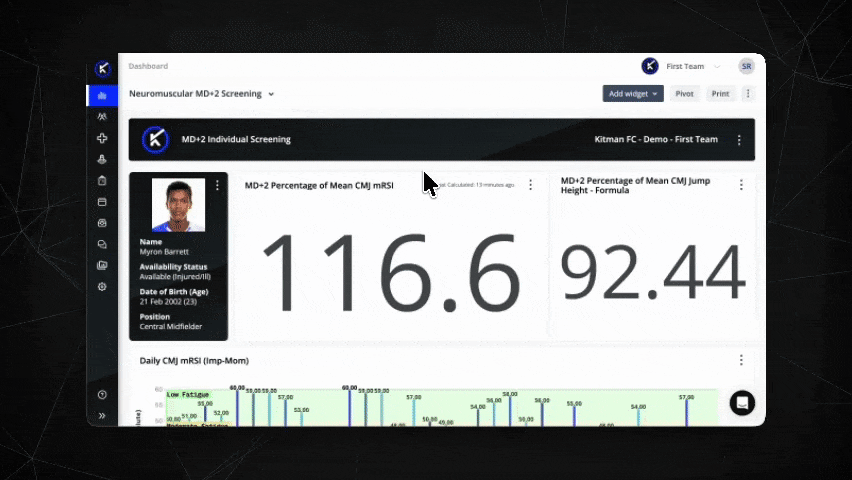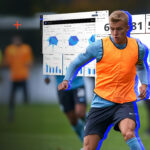Not every “green” day is green. After heavy blocks or tight turnarounds, quantifying neuromuscular readiness through reactive strength index (RSI), time-to-takeoff (TTT), and jump height can reveal fatigue long before it’s visible in performance.
A longer time to take off, a dip in RSI, or a few centimeters off jump height often signal that an athlete’s central nervous system hasn’t fully recovered. When those metrics aren’t benchmarked against each athlete’s baseline, match day plus one (MD+1) or game day plus one (GD+1), and combined with subjective wellness, training programs risk overshooting capacity, increasing injury risk, and compromising performance.
The Challenge
Even with high-frequency testing, many teams still face three key barriers:
- Silos over synthesis. Jump tests, wellness data, and load metrics live in separate systems, making same-day readiness calls guesswork.
- No athlete-specific context. A 3 cm drop or 0.08 RSI change means little without individual baselines.
- Reactive decisions. By the time fatigue is visible, the session has already been less effective — and the athlete may be paying the price.
The result: inconsistent load management, preventable soft-tissue injury risk, and performance inconsistency.
What We Hear from Sports Science and Performance Staff
- “We collect jump and wellness data, but don’t have a consistent, same-day readiness signal.”
- “I need thresholds I can defend when I pull a player back—or push someone on.”
- “We’re missing a closed feedback loop: flag → modify session → track response.”
The Solution: Building a Quantitative Model for Readiness
With the Performance Optimization Solution in iP, teams can operationalize a quantitative readiness model that combines objective jump metrics (RSI, TTT, jump height) with subjective wellness, computed as a percent change or z-score relative to athlete baselines (e.g., MD+2 / GD+2).

This unified workflow surfaces readiness flags and actionable prompts, enabling practitioners to individualize load with precision and confidence.
What this unlocks
- Composite readiness profiles (objective + subjective) with configurable weighting
- Athlete-specific thresholds (e.g., ≥ 10 % drop or ≥ 1.5 SD) and automated alerts
- Roster dashboards for a daily view of who’s primed and who needs recovery
- A closed loop: record interventions, monitor responses, refine thresholds
What You Can Do in Performance Optimization
Screen quickly
- Standardize Countermovement Jump (CMJ) / drop-jump protocols; capture RSI, TTT, and jump height — iP automatically calculates % change and z-scores versus MD+1 baseline.
Blend physiology with perception
- Integrate wellness inputs (fatigue, soreness, sleep, mood) into the same dashboard; apply athlete- or phase-specific weighting to reflect context.
Act the same day
- Readiness flags trigger load adjustments—alter volume, intensity, or exercise selection—while iP logs every modification for review.
Prove impact
- Track modified sessions and subsequent readiness rebounds; analyze longitudinal trends to refine thresholds and reduce fatigue-related risk.
See the Readiness to Train Workflow
Ready to Quantify and Act on Readiness?
With the Performance Optimization Solution in iP, you can quantify, visualize, and act on readiness daily—turning fatigue signals into confident, data-driven training decisions.
Already using iP? Message our Performance Experts via the in-platform Message Center.
New to iP? Contact us to learn how this workflow can work for your teams.




